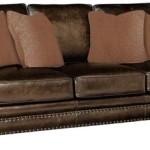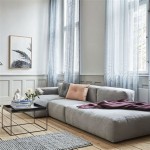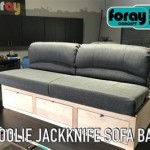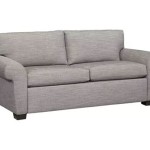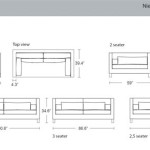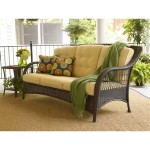The Queen Anne Sofa: A Timeless Classic
The Queen Anne sofa, a staple of traditional interior design, remains a popular choice for its elegant silhouette and comfortable design. Characterized by its cabriole legs, scrolled arms, and often, a camelback or humpback top, the Queen Anne sofa represents a specific period in furniture history and continues to influence furniture design today.
The style emerged during the reign of Queen Anne of Great Britain (1702-1714), though its namesake is somewhat misleading. The furniture style associated with her reign developed several years after her death, during the early Georgian period. The elegant lines and refined details often attributed to "Queen Anne" style are more accurately reflective of the broader stylistic trends of the early 18th century.
One of the most defining features of the Queen Anne sofa is its cabriole leg. This S-shaped leg, terminating in a pad foot or claw-and-ball foot, provides a sense of lightness and grace. The cabriole leg distinguishes the Queen Anne style from the heavier, more ornate styles that preceded it, such as the William and Mary or Baroque styles. The graceful curve of the leg is a key element in the overall aesthetic of the sofa.
The arms of a Queen Anne sofa typically feature elegant scrolling, adding to the overall flowing lines of the piece. These scrolls can vary in size and ornamentation, but they consistently contribute to the sofa's refined appearance. Some variations might include intricate carvings or decorative motifs, while others maintain a simpler, more understated design.
The back of a Queen Anne sofa can take several forms. The camelback, also known as a humpback, features a raised curve in the center, providing both visual interest and additional back support. Other variations include a flat back or a slightly sloped back, often with a tight upholstered finish. The choice of back style can significantly influence the overall appearance and comfort of the sofa.
Upholstery plays a critical role in the aesthetic of the Queen Anne sofa. Historically, luxurious fabrics such as damask, velvet, and brocade were common choices, reflecting the opulence associated with the period. Today, a wide range of upholstery options are available, from traditional fabrics to contemporary materials like linen and cotton blends. The choice of upholstery allows for customization to suit various interior design schemes.
The construction techniques used in creating a Queen Anne sofa are essential to its longevity and quality. Traditionally, these sofas featured a solid wood frame, often made from walnut, mahogany, or cherry. Joints were meticulously crafted using techniques like mortise and tenon joinery, ensuring structural integrity. Modern versions often incorporate updated construction methods while maintaining the fundamental design principles of the original Queen Anne style.
Incorporating a Queen Anne sofa into a modern interior can add a touch of classic elegance. It can serve as a focal point in a living room, drawing attention with its timeless design. When paired with other period-appropriate furniture and accessories, the Queen Anne sofa contributes to a cohesive and sophisticated aesthetic. However, it can also be successfully integrated into more eclectic or transitional spaces, providing a touch of traditional charm within a contemporary setting.
The Queen Anne sofa is not simply a piece of furniture; it represents a historical lineage of design and craftsmanship. Its enduring popularity speaks to the timeless appeal of its elegant form and functional design. While variations and adaptations exist, the core elements of the Queen Anne sofa—the cabriole legs, scrolled arms, and characteristic back—continue to define its distinctive style. This allows the Queen Anne sofa to remain a relevant and desirable choice for those seeking to add a touch of classic sophistication to their homes.
When selecting a Queen Anne sofa, careful consideration should be given to factors such as size, upholstery, and construction. Measuring the available space is crucial to ensure a proper fit. Choosing the appropriate upholstery fabric and color is essential for coordinating with existing décor. Examining the construction quality, including the frame materials and joinery techniques, will help ensure the longevity and durability of the piece.
The Queen Anne sofa offers a versatile seating option suitable for a variety of interior design styles. Its timeless elegance complements traditional settings while also adding a touch of classic charm to more contemporary spaces. Whether upholstered in luxurious velvet or a more casual linen blend, the Queen Anne sofa remains a statement piece, reflecting a rich history of design and craftsmanship.

Antique Queen Anne Sofa Guide Details Page Carved Oak Furniture

Queen Anne White Sofa Shabby Furniture Elegant Home Decor Sofas

Chesterfield Sofa Antique Queen Anne Abode Sofas Black Leather 2 Person

Camelback 80 Sofa W Queen Anne Leg Thomas Lavin

Queen Anne Style Leather Sofa

Antique Queen Anne Style Wing Back Sofa Antiques Atlas

Queen Anne Style Sofa Antiques Atlas

Early Twentieth Century Antique Queen Anne Sofa Robinson Of England

Lot Queen Anne Style Camel Back Sofa

Queen Anne Leather Sofa Set

